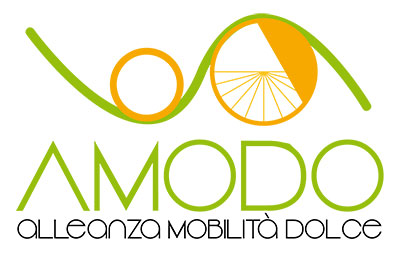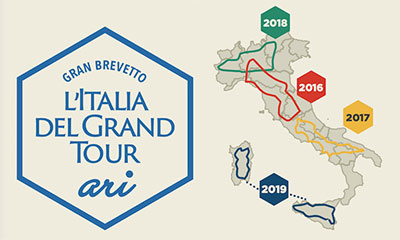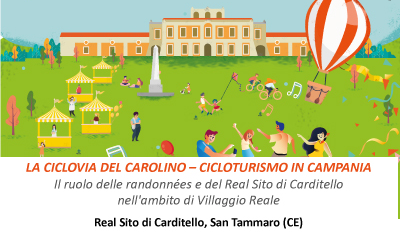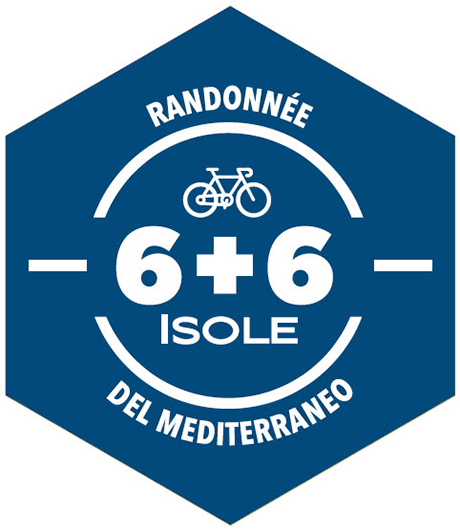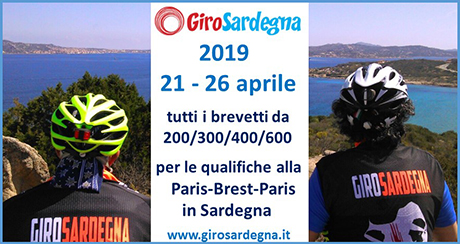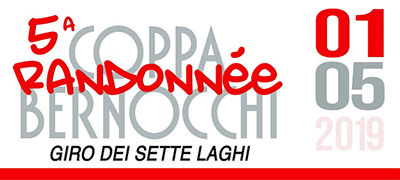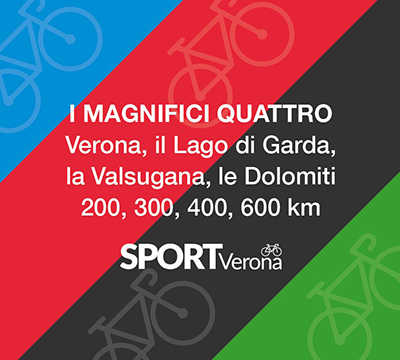« Notizie
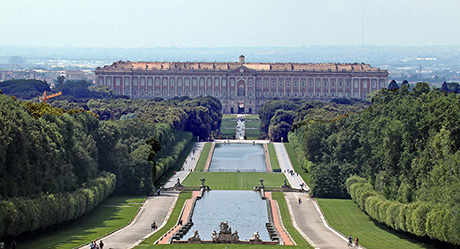
scroll for English Version
Tempo d’estate e di riposo, ma anche di pensieri verso le prossime randonnée. Tra quelle previste in settembre in Campania, ve ne sono diverse e tutte molto interessanti. Quella delle Sirene, sulla divina costiera (2 settembre); quella della via del Grano ad Eboli (9 settembre); la ‘mitica’ 600 km da Salerno; la 30pioli a Parete (23 settembre) ed, infine, la Randonnée Reale (30 settembre) a conferma dell’espansione numerica e qualitativa del movimento delle Randonnée in Campania. A quale partecipare? Ad una, due, oppure a tutte e cinque? Naturalmente, dipende dagli impegni e dall’allenamento.
Per motivi di lavoro, di sicuro non potrò partecipare alle prime due (peccato !). Vedo francamente difficile, inoltre, per me la 600 km da Salerno e sono in dubbio sulla 30 pioli, perché sono un randonneur con poco tempo a disposizione (sic !). Al momento, quindi, sono sicuro di poter prendere parte alla Randonnée Reale. Non è, naturalmente, una scelta di ripiego, perché la Randonnée Reale fa vedere in trasparenza, come proverò a dire, la ‘filosofia’ emergente del movimento dei randonneur in Campania.
La Randonnée Reale è un progetto che è nato l’anno scorso, grazie all’iniziativa di Giuseppe Gallina e dell’Associazione Veloclub Ventocontario e che va assumendo dei contorni sempre più definiti, sino a divenire (lo speriamo) un modello organizzativo per altri eventi dello stesso genere. Il progetto prevede due percorsi: una ciclopedalata (95 km) e una randonnée standard di 200 km. Gli ingredienti della Randonnée Reale sono quattro: a) apertura internazionale b) valori paesaggistici c) significatività culturale d) promozione enogastronomica. L’obiettivo del progetto, insomma, è creare una simbiosi natura-cultura attraverso un evento sportivo non competitivo, che possa aiutare nella valorizzazione territoriale della provincia di Caserta, con possibili effetti turistici nel breve e nel lungo periodo. Ci ha già creduto il comune di Castel di Sasso che ha incluso la Randonnée Reale in un progetto di questo tipo, da poco finanziato con un piccolo contributo dalla Regione Campania.
L’apertura internazionale del progetto è garantita dalla presenza di una testimonial, come Juliana Buhring, una ciclista-endurance che detiene il record femminile del giro del mondo in bici senza assistenza e che è da sempre espressione di un modo di fare ciclismo non disgiunta dall’attenzione a questioni sociali di grande importanza, come la lotta alla disuguaglianza di genere e la salvaguardia dei diritti dell’infanzia. Juliana è autrice di diversi libri, sulle sue imprese ciclistiche e sul suo impegno sociale, ed è una persona intrinsecamente cosmopolita che lascia un segno in tutti coloro che hanno avuto modo di incontrarla sulle strade.
I valori paesaggisti sono di grande interesse. Si parte da Castel di Sasso, si va verso Caserta e poi attraversando Valle di Maddaloni, ci si orienta verso Sant’Agata dei Goti. Si muove, quindi, verso il Volturno per giungere, facendo una bella scalata, prima a Caiazzo, e per coloro che scelgono la randonne completa, a Rocchetta e Croce (l’altra salita impegnativa del percorso), per ritornare, infine, verso Castel di Sasso, scegliendo strade poco battute dal traffico e immersi in boschi e zone dal notevole rilievo naturalistico.
La significatività culturale, è, poi direi, unica. Grazie alla disponibilità della Reggia di Caserta e del direttore Mauro Felicori e alla collaborazione del Comune di Valle di Maddaloni, la Randonnée fa un passaggio all’interno della Reggia e successivamente, dà la possibilità di pedalare sulla sommità dell’Acquedotto Carolino. Chi, come me, l’ha fatto l’anno scorso può testimoniare che sono momenti unici e molto emozionanti. In entrambi i casi, si fa esperienza della storia e della bellezza dei siti in modo del tutto originale. Si è, infatti, abituati a vederli dal ‘di fuori’, come nel caso della Reggia, oppure ‘al di sotto’, come nel caso dell’Acquedotto Carolino, ma, raramente ‘all’interno’ e ‘al di sopra’. Queste esperienze sono rese possibili, come è noto, solo con la bici ed in particolare, dal modello del ciclismo slow della randonnee che attiva uno spazio-tempo peculiare di presenza ciclistica che non è resa disponibile nel modello ‘fast’ delle gran fondo o delle altre manifestazioni competitive.
L’evento, infine, testimonia anche un impegno verso la nutrizione ed in modo particolare verso l’enogastronomia del casertano. Ai punti di ristoro, i randonneur potranno beneficiare di cibi locali (come la mela annurca) e prodotti ‘a chilometro zero’. Una vera e propria ‘chicca’ quest’anno sarà la sosta alle Cantine Lisandro, note per la produzione di vini pregiati, come il Pallagrello. Ci sarà da faticare per raggiungerle e c’è il rischio di rimanere sedotti dalla bontà delle libagioni. Sarà, quindi, una prova nella prova, nella quale chi saprà cedere moderamente alle tentazioni, potrà continuare ‘festina lente’ verso la sua meta (breve o lunga, a seconda della scelta).
Gli ingredienti per un evento speciale, insomma, ci sono tutti. Il gruppo dei ‘Facc’è Bike’ sarà presente, così come la Tranchese Cycling e tutti coloro che aderiscono al suo progetto ‘Io corro leale’. Siamo sicuri, inoltre, che l’iniziativa sarà considerata attrattiva da molti altri gruppi e associazioni sportive campane e non campane. Nella sfida per lo sviluppo di un ciclismo slow che promuova forme sostenibili di turismo e di attività sportiva, l’ulteriore successo del progetto potrà dare una nuova vita al movimento ciclistico in Campania in un’epoca in cui sembra necessaria una nuova svolta etica non esclusivamente performativa della pratica ciclistica che appare viceversa sempre più dominata dagli ‘dei’ neoliberisti della performance e del business. Se ne parlerà anche in un convegno di presentazione della Randonnée Reale a Castel di Sasso il 29 settembre il giorno prima dell’evento. Le Randonnée in Campania, in questo senso, sono un piccolo segnale vitale di una emergente, ma ancora frammentata rete di buone ed innovative pratiche ciclistiche.
Ulteriori informazioni sulla Randonnée Reale e sulle altre Randonnée in Campania possono essere individuate sul sito ARI.
Paolo Landri
Un Sociologo in Bici
p.landri@irpps.cnr.it
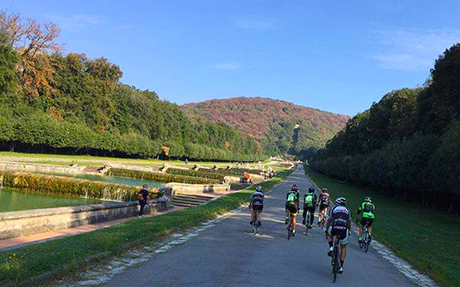
English Version
It is summer time. Time to relax, but also to think about the next randonnèe.
In September, some envisaged events in Campania organized by the association of the Italian randonneurs are very interesting: 1) the ‘Randonnée of the Sirens’, on the divine Amalfi coast (2 September); 2) the one called ‘Via del Grano’ starting from Eboli in the province of Salerno (9 September), 3) the remarkable 600 km from Salerno (15 Septemeber, ‘Randonnée of Tirreno’) 4) the one named ’30 pioli’ from Parete in the province of Caserta (23 September), and finally 5) the Royal Randonée (‘Randonnée Reale’) departing from Castel di Sasso, a little village in the province of Caserta (30 September). Overall, the plurality of the offer of these events confirms the excellent state of the Randonnée movement in Campania that is registering a quantitative and qualitative increase.
It is not an easy task to make a choice among equally valuable and different alternatives. Should I participate to one, two, or to all the five events? Of course, it depends on the agenda and training. Probably, my choice will go to the Royal Randonnèe (‘Randonnèe Reale’) as I will not be able to attend to events before the middle of September. It is not, however, a second choice since the project behind this randonnée has been carefully prepared, and has a lot of attractiveness. By describing, more in details the royal randonnèe, we will bring to the forefront the philosophy of the Randonnée movement in Campania also shared by the other events in September.
The royal randonnée had the first edition last year, thanks to the initiative of Giuseppe Gallina and to the ‘Veloclub Ventocontrario’ Association. The project is becoming more and more defined, and will probably get to be a benchmark for those willing to organise similar events in the Region. The project includes two routes: a short one (95 km) and a longer route (200 km) both having as core content the cycling in some of the most remarkable Bourbons royal sites in the province of Caserta. The ingredients of ‘Randonnée Reale' are four: a) international openness; b) the beauty of the landscapes; c) cultural significance; c) promotion of wine and foods. The goal of the project is to create a nature-culture symbiosis, by the formula of a non-competitive sports event, that can help in the valorisation of the territories of the Province of Caserta. The first Municipality who has invested in the project, Castel di Sasso, has been recently awarded with a small fund from Regione Campania.
The international openness is guaranteed by the presence of Juliana Buhring, an endurance cyclist who has given her endorsement to the event. Juliana has the Guinness world record as a woman cycling around the world without assistance. She is notably a witness of a way of being an athlete that is not separated by the attention to main social issues, like the fight to gender discrimination and the defence of the right of the childhood. She is intrinsically cosmopolitan, and leaves a mark in everybody meets her.
The beauty of the landscapes is significant. The route starts from Castel di Sasso, goes to Caserta and through Valle di Maddaloni leads by crossing the Volturno River, and then by climbing a steep climb, to Caiazzo. Here, those opting for the complete randonnèe are invited to go to ‘Rocchetta e Croce’ via the other difficult ascent of the route to finally come back through slightly busy roads and special naturalistic areas and woods to Castel di Sasso.
Undoubtedly, its cultural value is unique. The royal randonnée permits to make an exceptional passage inside the Reggia di Caserta, thanks to the sensibility of Mauro Felicori, the director of the monument, and to pedal on the top of the Carolino Aqueduct in Valle di Maddaloni, i.e. the infrastructure that was designed by Vanvitelli to feed the monumental fountains of the ‘Reggia’ gardens. I did it last year, and I had outstanding and touching moments. In both cases, one has an original experience of the history and of the beauty of the sites. While it can be easy to see the ‘Reggia' from the outside, or from below, in the case of the Carolino Aqueduct; it is quite rare to visit these monuments either ‘from within' or ‘on the top of it'. These experiences are made possible only by bike, or notably, by the slow model of cycling of the randonnée enacting a space-time for ‘being there’ that is not available in the fast model of the other competitive rides, like ‘gran fondo’, or similar highly competitive events.
Finally, the event testifies a commitment towards the quality of the nutrition, and in particular towards the food and the wine of the Caserta countryside. Participants will find at the meeting points of refreshment along the route a range of local foods (like ‘mela annurca', a local apple) and ‘zero-kilometre' products. The annual surprise of this year, however, will be the stop at the Lisandro Canteens, very well known for the production of wines, as ‘Pallagrello'. It will be hard to get there, and there will be the risk to become seduced by the goodness of the libations. It will be, therefore, ‘a test within the test’ to let emerge a capacity to resist to the temptations, without losing the tension to complete the end of the route (short, or long one depending on the choice).
This randonnée has then the ingredients to be a special event. The ‘Facc’e Bike’ group will be there; similarly the Tranchese Cycling Association, and those subscribing the relative project ‘Io corro leale’ (‘Fair Play Project in Cycling’). Other associations in Campania and from other Italian regions will be attending. Further success of this project, and a wide participation to the envisaged randonnée in September will be important to make visible the slow cycling in Campania, a virtuous assemblage of sport and sustainable tourism. Moreover, it could reinforce the cycling movement, in a time where there is the need for non performative ethics in the cycling countering the neoliberistic ‘gods’ of the results and business in this field. The topic will be discussed also in the opening conference of the Randonnée that will take place at Castel di Sasso the day before the event (29 September). As a matter of fact, the Randonnée movement in Campania, is a small but vital sign of an emerging bottom-up, still scattered, and complex alternative network of practice.
Further information about the ‘Randonnée Reale’ as well as the other randonnée in Campania can be found at ARI site on the Internet.
Paolo Landri
A cycling sociologist
p.landri@irpps.cnr.it



